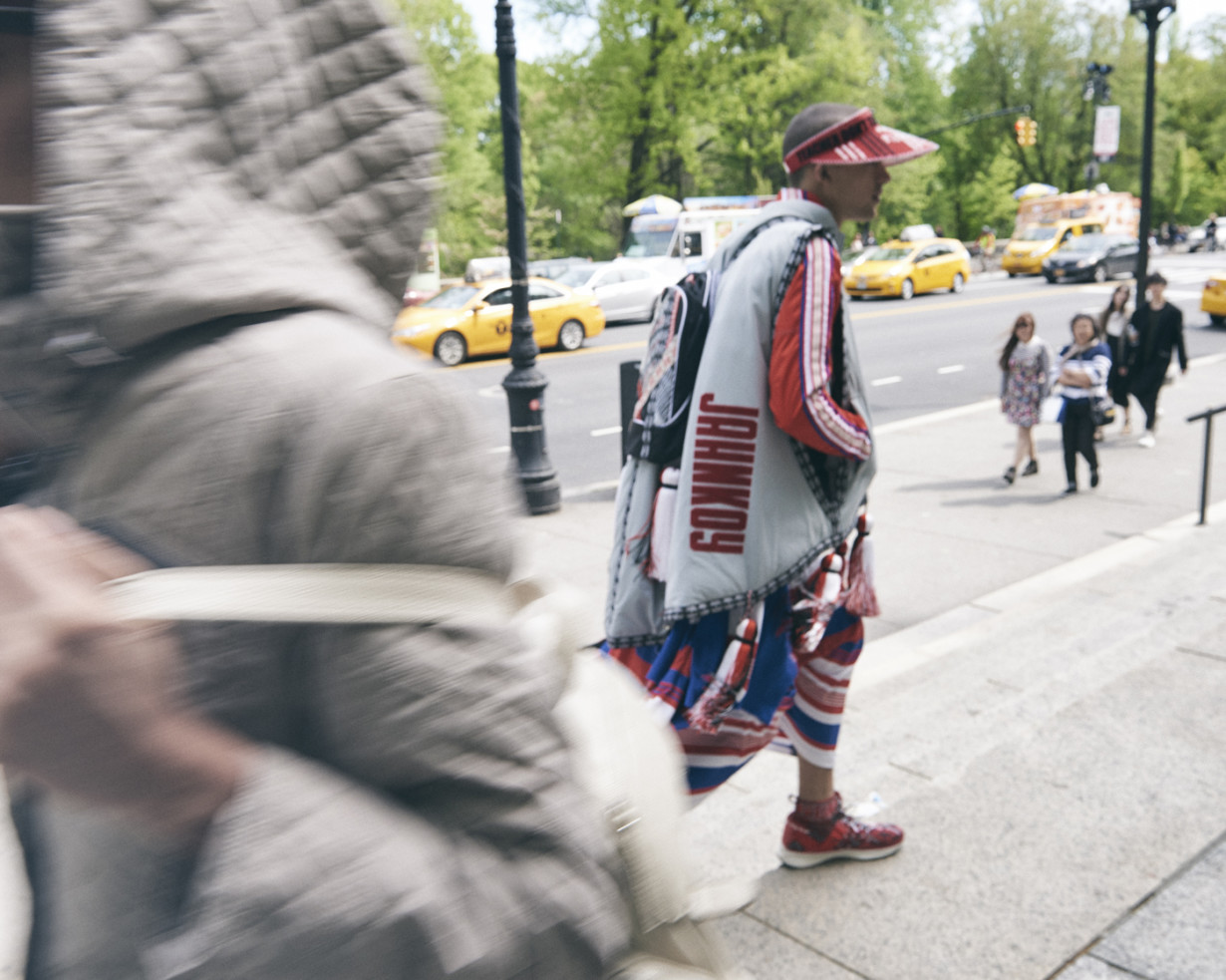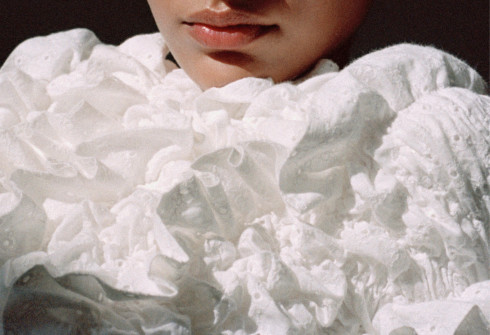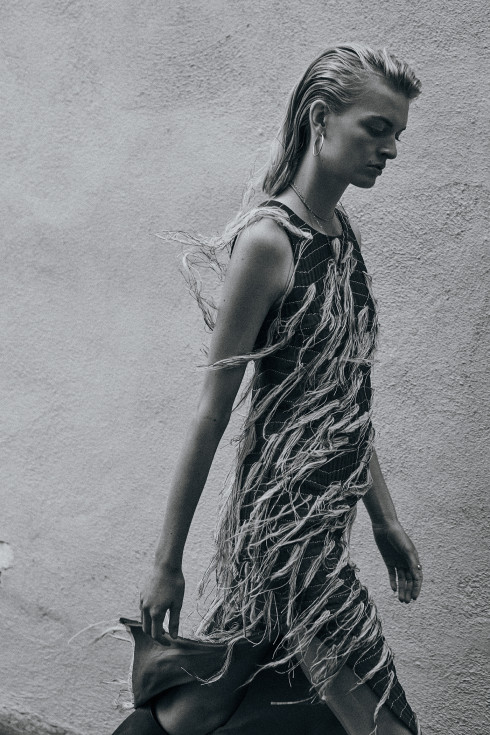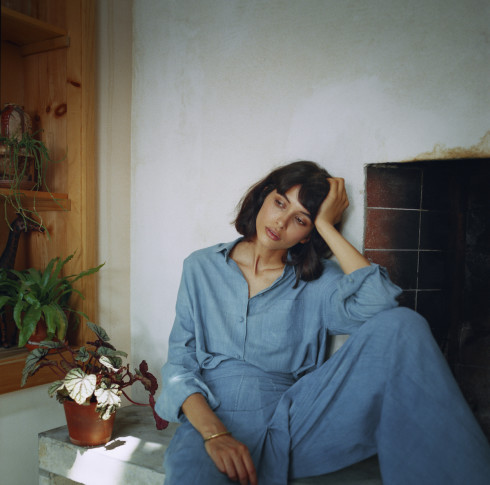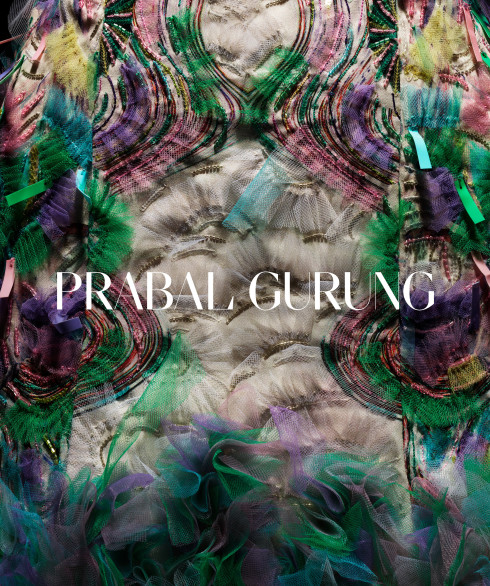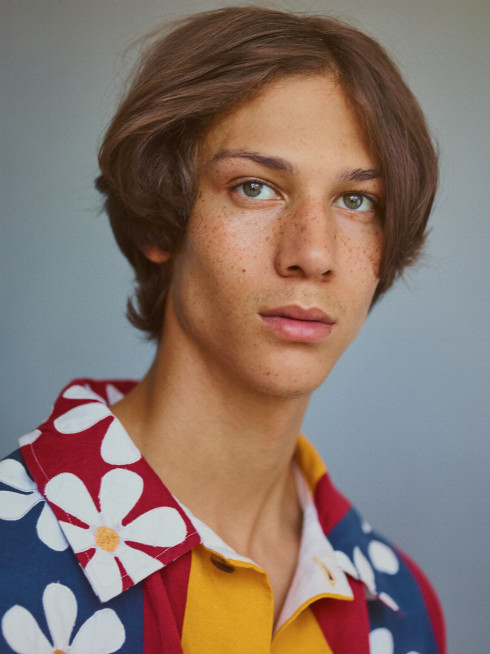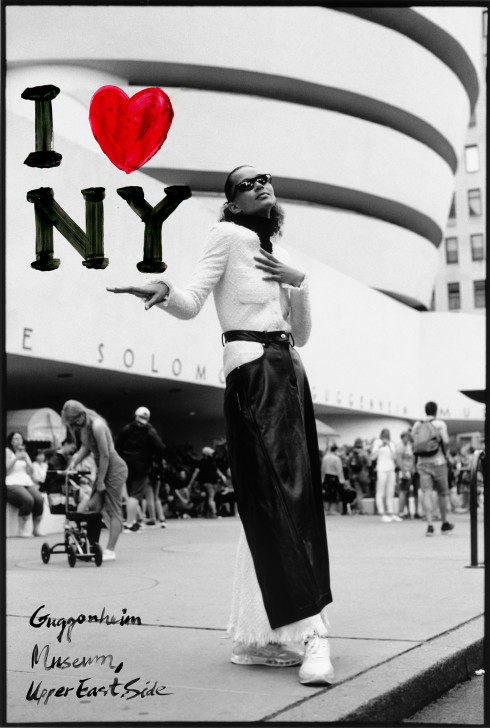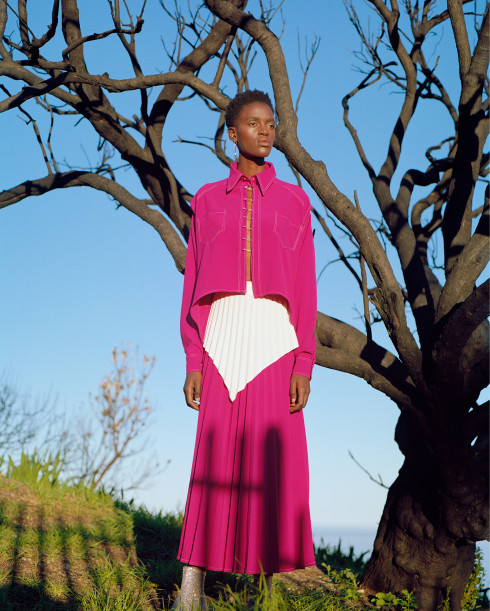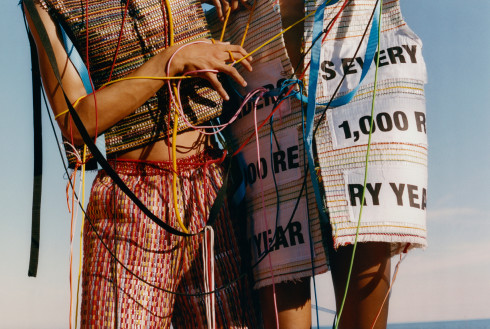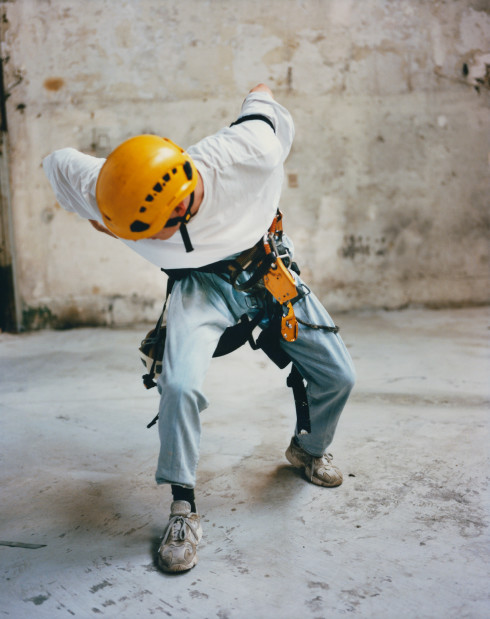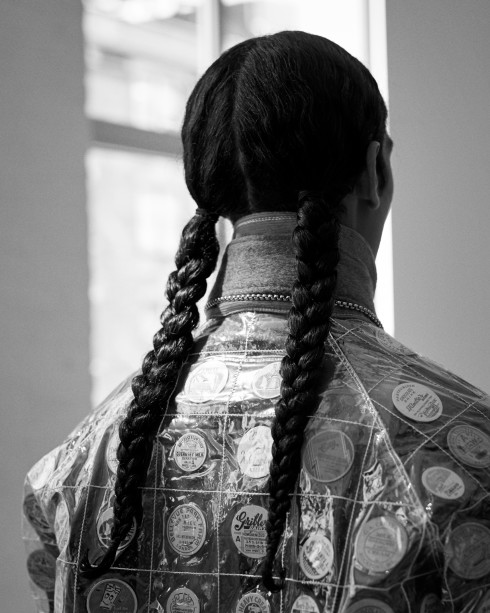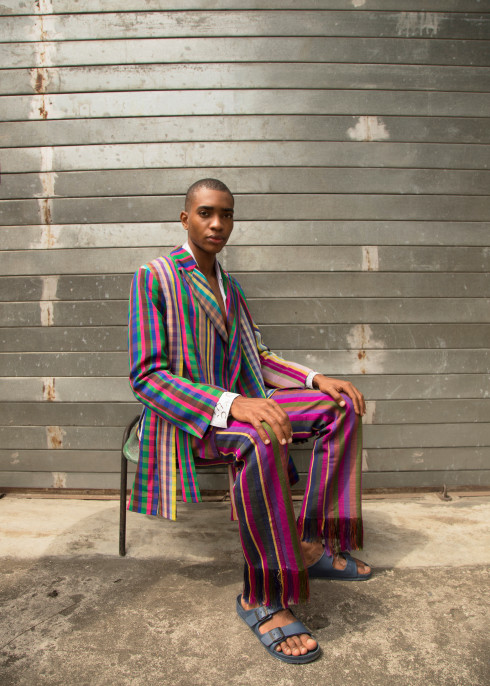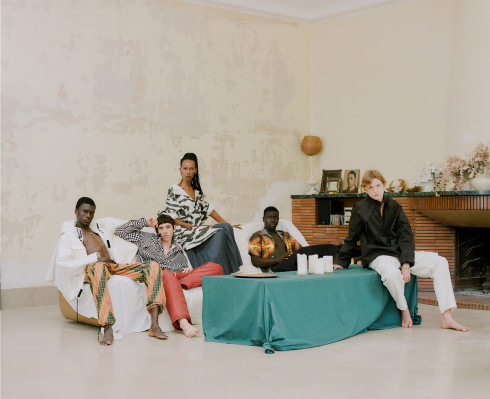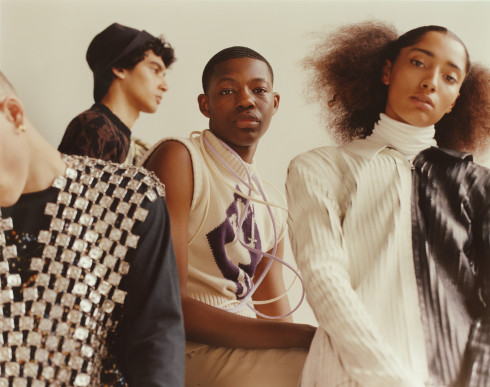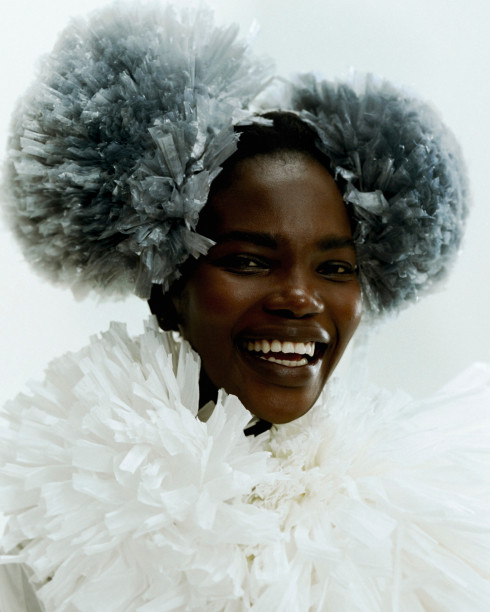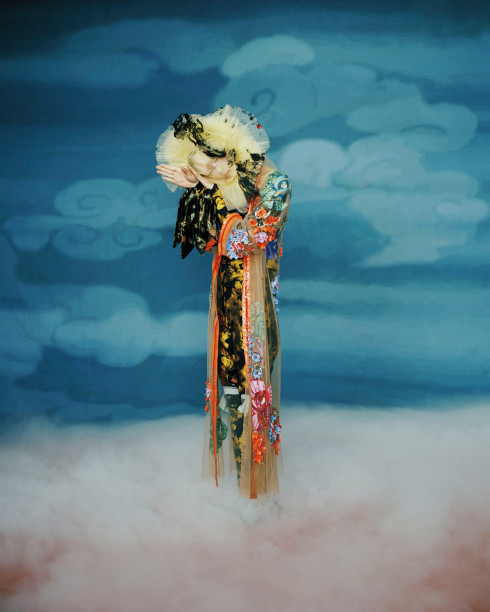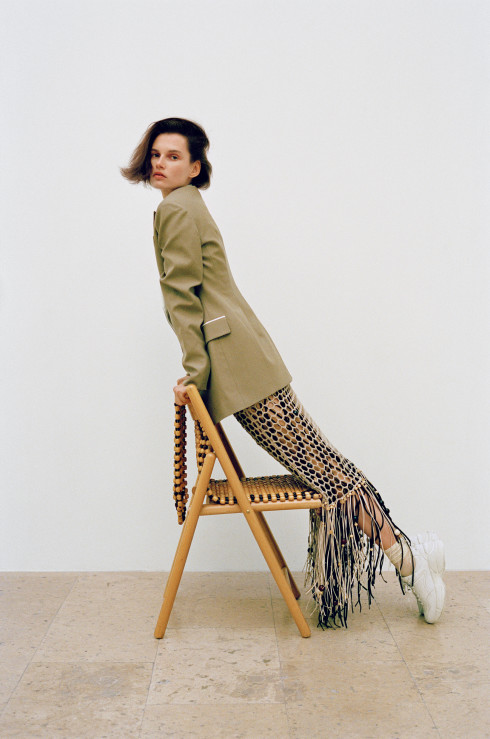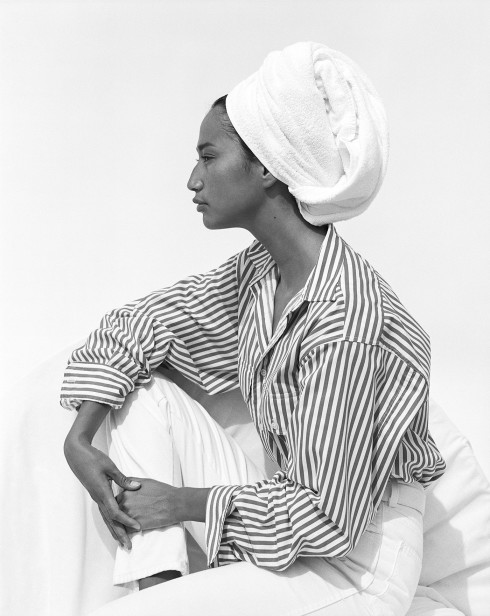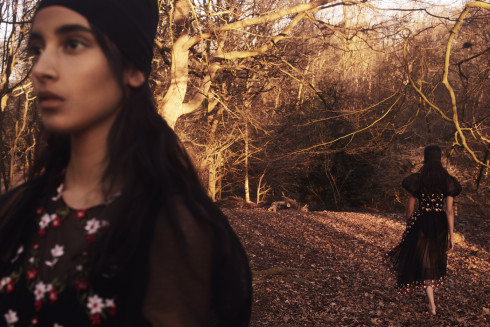- By
- Rosie Dalton
- Photography by
- Sloan Laurits
Styling by Mac Huelster at Home Agency. Grooming by Theo Kogan. Model: Myles Gable at VNY Models.
JAHNKOY
The LVMH Prize for Young Fashion Designers isn’t just about celebrating raw talent; it’s about radical originality. Jahnkoy designer and visual artist Maria Jahnkoy (née Kazakova) has this quality in spades. Nominated from a pool of more than twelve hundred applicants as one of eight finalists for this year’s LVMH Prize, this Russian-born, Brooklyn-based artist and menswear designer is especially marked for her unexpected approach to sustainability—in a refreshingly unorthodox visual language. Instead of the usual neutral tones, timeless silhouettes, and hemp-like fabrications, the Jahnkoy vision is a tapestry of brightly colored influences.
Having studied in the Parsons MFA program—one which is renowned for incorporating sustainability—Jahnkoy’s début collection draws from up-cycled clothing and other found materials. Entitled “The Displaced,” it’s a bright statement in sportswear as never seen before. Embellished with intensive handicraft through beadwork, crocheting, weaving, and embroidery, her idea was to take one of the driving forces of globalization (sport) and reintroduce the values of craftsmanship and longevity.

The constant search for modernization has sentenced traditional artistry to extinction, Jahnkoy believes. With so much mass-produced clothing now made at very little expense, we’re increasingly presented with fashion that’s deprived of human knowledge—the exact thing that once made it a vibrant and unique form of cultural expression. It is for this reason that Jahnkoy chooses to wear mostly traditional, handmade garments herself. “I believe we have to bring back those clothes, because it’s really important to promote the craftsmanship of those who are losing jobs,” she says.
The designer’s approach with Jahnkoy certainly evokes this same love too. Not only are her hoodies colorfully adorned, but this passion extends down to even the sneakers as well. Working in collaboration with Puma, Jahnkoy hand-beaded and -embroidered each and every pair of shoes for her début show. “Puma created this innovative knitted textile and it’s an amazing material for me to do embroidery on because it’s so soft,” she explains. At the moment, these sneakers are all one of a kind, but she hopes to move into some limited-edition, embroidered footwear down the track as well.
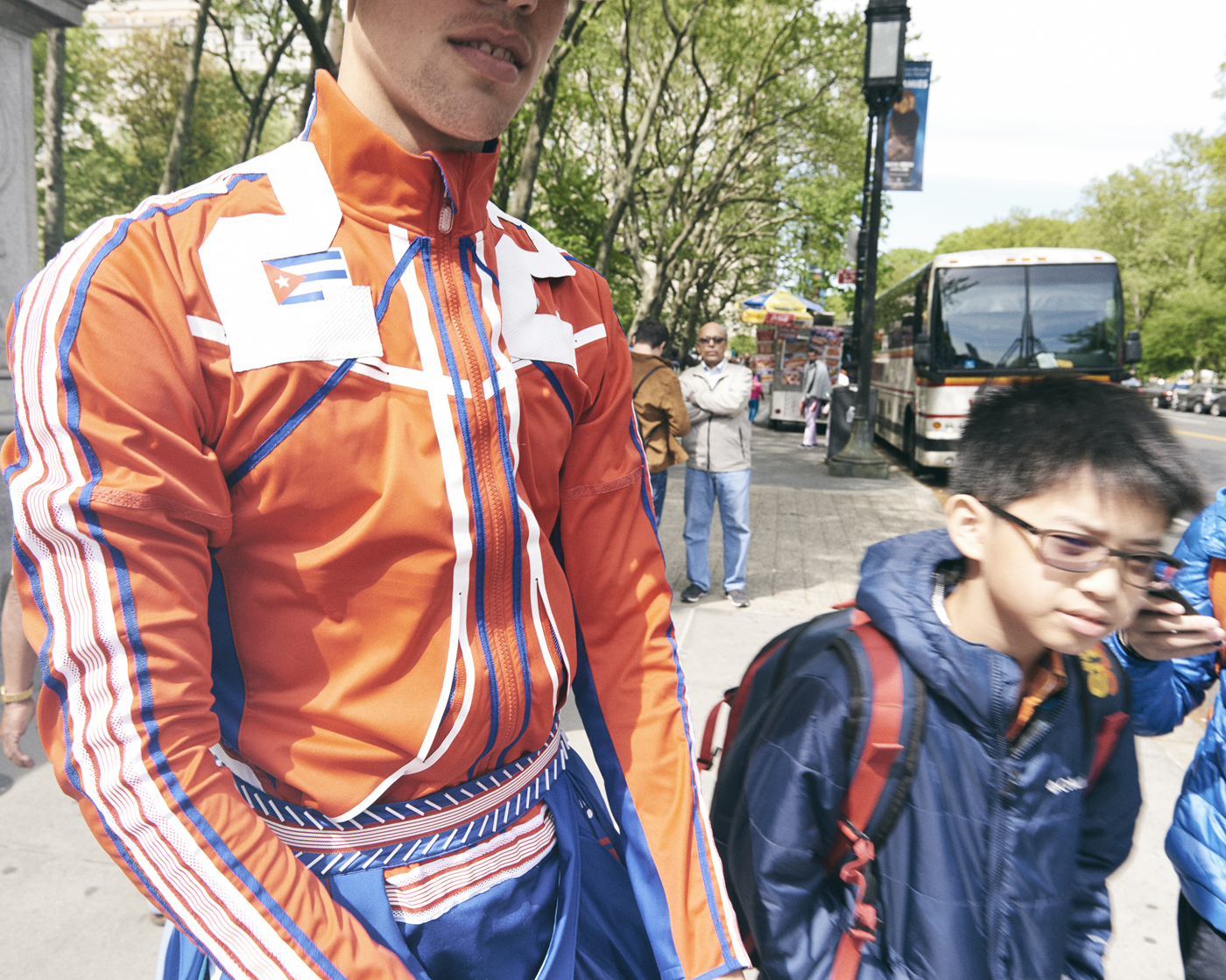

Jahnkoy’s ultimate goal is even more all-encompassing, in fact. “What’s important to me is to bring awareness,” Jahnkoy says. “Anyone can take their sneakers and bead them, so it’s about making it fashionable so people understand it’s good for them to have some sort of handiwork on their garments.” Raised in a small Siberian town—which she refers to as the Silicon Valley of the Soviet Union—Jahnkoy says that she has cared about nature and the environment since childhood. She watched her mother build a clothing business and has always felt very connected to traditional craftsmanship. As far as her own work is concerned, though, “the sustainability aspect mostly developed in New York,” she says, “when I was studying in the Parsons MFA program.”
“The more you learn about the fashion system and how products are made, the more you realize just how much waste every student produces out of their individual work,” Jahnkoy explains. “We are all creating something, so in the end we are all creating landfill. It’s just about working out how you can create more impact socially and less impact physically.” For Jahnkoy, that means finding materials on the street on which she lives or in local bodegas. It’s about, she says, drawing from her surroundings.

Again, this dedication reveals her desire to hark back to the origins of clothing itself. “The way people used to make clothes was always using their surrounding materials,” she elaborates. The key difference is that those materials used to be more plant-based. “Unfortunately, now our surroundings are full of so much garbage,” she laments. It is for this reason, then, that Jahnkoy has chosen to incorporate some of those mass-produced pieces into her own garments, repurposing them into compelling works of art rather than always producing something new.
“I think the value of art is to say what everyone wants to say without saying it,” Jahnkoy reveals—and that’s certainly true of her own approach to the issue of mass consumption. What about the selection process, though? How does she choose which sportswear garments to up-cycle and incorporate into her collections? “Every material I use is there for a reason. It has meaning to me,” she says. “What interests me is to think and create based on my observations and surroundings.” Of course, her clothes are more than just a commentary on a broken fashion system. They are also a reflection of the qualities Jahnkoy holds most dear: color and texture. “My eye loves color and, for me, the handiwork and texture is really important too. When you wear these garments, you feel very whole. I think that’s what’s missing from the garments of today.”
For more information, please visit Jahnkoy.com.

- By
- Rosie Dalton
- Photography by
- Sloan Laurits
Styling by Mac Huelster at Home Agency. Grooming by Theo Kogan. Model: Myles Gable at VNY Models.
